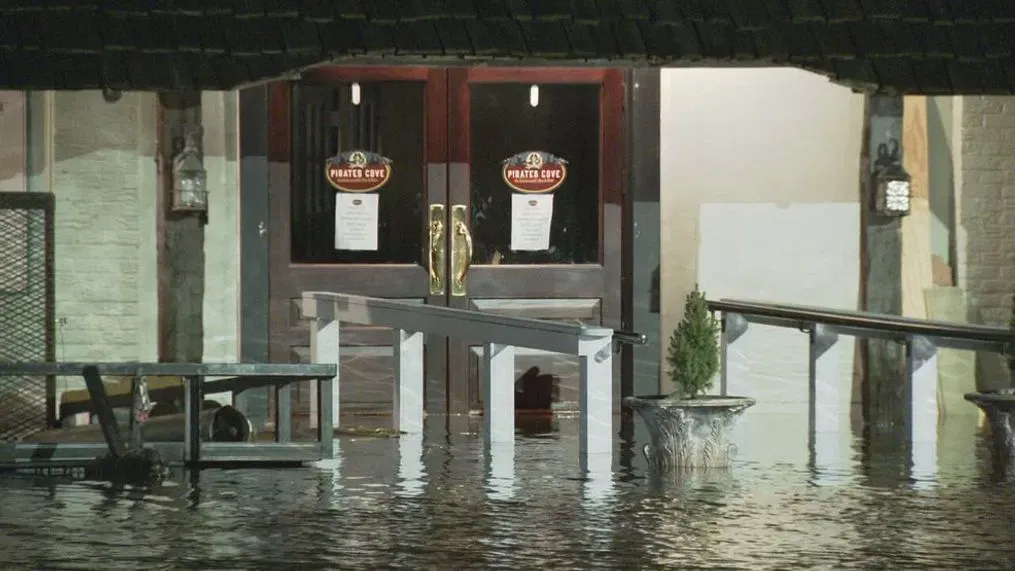Introduction
Annapolis, a picturesque city located on the shores of Chesapeake Bay, recently experienced one of the worst flooding incidents in over two decades. The downtown area, particularly City Dock, was inundated with water after a powerful storm accompanied by heavy rain and strong winds. The aftermath of this natural disaster has left local businesses grappling with uncertainty, as they face the daunting task of rebuilding and reopening their establishments. The city has implemented a red sign notice system, preventing businesses from resuming operations until they pass inspection. In this article, we will delve into the impact of the flooding on Annapolis businesses, the challenges they face, and the steps being taken to restore normalcy.
The Devastating Effects of the Flooding
The recent storm that struck Annapolis left a trail of destruction in its wake. Many businesses around City Dock, including popular establishments like Pips on Dock Street and Storm Brothers Ice Cream, were severely affected. The floodwaters breached their premises, causing significant damage to infrastructure, equipment, and inventory. The gravity of the situation is evident from the fact that this flooding event is being compared to the notorious Hurricane Isabel, which wreaked havoc over 20 years ago. The forced closure of these businesses not only impacts the livelihood of their owners but also leaves employees uncertain about their future.
Businesses Forced to Remain Closed
As the floodwaters recede, business owners and employees find themselves in a challenging situation. Despite their efforts to clean up and resume operations, they have been instructed not to open until further notice. Ryan Lamy, the owner of Pips on Dock Street, expressed his frustration, stating that being closed for an extended period is not something he can afford as a small business owner. The red sign taped to the doors of the affected establishments declares them unfit for human habitation, leaving the owners in the dark about the criteria for reopening. Sveinn Storm, owner of Storm Brothers Ice Cream, laments the loss of power during the flooding, which rendered their pumps inoperable and resulted in damage to their freezers.

Uncertainty and Financial Burden
The lack of clear guidance on reopening has left business owners like Ryan Lamy and Sveinn Storm feeling anxious and uncertain. They are unsure of the steps they need to take to meet inspection requirements and how long the process will take. Lamy mentions the possibility of having to rip out his walls, which adds to his apprehension. The financial burden of rebuilding and replacing damaged equipment is also a significant concern. Storm Brothers Ice Cream estimates that they may need to invest around $60,000 in the restoration process. With bills to pay and employees out of work, time is of the essence for these businesses.
The City’s Response and Inspection Process
The city of Annapolis has implemented measures to ensure public safety and facilitate the reopening of businesses affected by the flooding. The closure of the establishments is considered a sanitation procedure due to the extensive water intrusion, with the properties being inundated with approximately 18 inches of water. The final decision on reopening lies with the health department, which will assess the safety and suitability of the premises. While the red signs indicating closure may seem alarming, they are primarily a result of the unprecedented water levels experienced during the storm.

Voluntary Self-Reporting Damage Assessment
To aid in the recovery process, the City of Annapolis has introduced a voluntary self-reporting damage assessment tool. Residents and business owners impacted by the flooding can use this tool to report any additional damages or provide information on unreported damages. The survey aims to gather crucial data and assist in allocating resources effectively. The city is keen to support those affected and expedite the inspection and reopening process as much as possible.
Rebuilding and Restoring Annapolis
The road to recovery for Annapolis businesses will undoubtedly be challenging, but the community is determined to rebuild and restore the city’s vibrancy. Local authorities, residents, and organizations are coming together to provide support and assistance to those affected. The following initiatives are underway to aid in the recovery process:
Financial Aid and Assistance Programs
Recognizing the financial strain faced by businesses, various financial aid programs have been established to provide relief. These programs offer grants, loans, and other forms of financial assistance to help cover the costs of rebuilding and reopening. Local and state governments, as well as nonprofit organizations, are collaborating to ensure that businesses receive the necessary support during this difficult time.
Community Cleanup and Restoration Efforts
The spirit of community is evident in the collective efforts to clean up and restore Annapolis. Volunteers, including residents and local organizations, are actively participating in cleanup drives, helping businesses remove debris, sanitize premises, and restore normalcy. These acts of solidarity are crucial in fostering a sense of hope and resilience within the community.
Collaboration with Insurance Providers
Business owners affected by the flooding are advised to collaborate closely with their insurance providers. Insurance coverage can play a vital role in mitigating the financial burden of the rebuilding process. Engaging with insurance professionals and understanding the extent of coverage can help expedite the claims process and ensure a smoother recovery.
Conclusion
The recent flooding in Annapolis has dealt a severe blow to local businesses around City Dock. The forced closure and uncertainty surrounding the reopening process have left business owners and employees in a state of anxiety. However, the community’s response, combined with the city’s efforts, aims to expedite the recovery process and provide the necessary support. Financial aid programs, community cleanup initiatives, and collaboration with insurance providers are crucial components of the rebuilding process. Annapolis, known for its resilience and tenacity, is determined to restore its vibrant business community and bounce back stronger than ever before.
